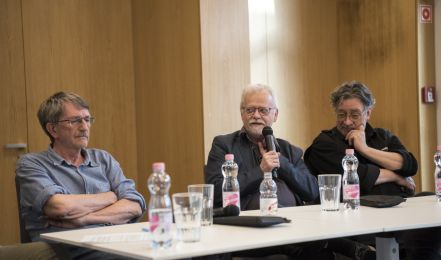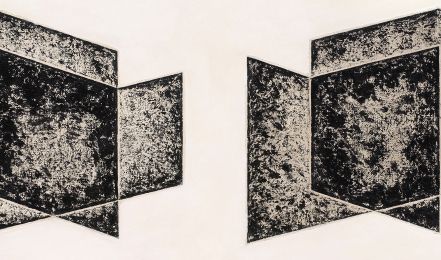‘painting’
- « previous
- 1
- 2
- next »
Angela Lampe: The Cold Order: A Review of Exhibition Germany/1920s/ New Objectivity/August Sander - Sociological Aspects of the Interwar Years
… translation into other languages points to the special nature of the concept. In addition to painting and photography, the project brought together architecture, design, film, theater, literature and music. Photographer August Sander’s masterpiece, Menschen des 20. Jahrhunderts (People of the 20th Century), established the motif of a cross-section through a society as a structural principle, as an “exhibition within an exhibition”. Together, these two perspectives opened up a broad …
Világhírű világarchívum – Beke László 80
… of art, or at least, who would dare to bear the responsibility for throwing them away?) Their painting palette, glasses, armchair... Their estate should be catalogued; it should be used to produce scholarly and promotional publications. The memorial museum needs managing, a memorial should be erected in front of the house, a car park must be created (possibly with a coffee stand). (László Beke: The Inhumanity of Art, 1979) László Beke was an internationally renowned art …
Válság vagy virágzás? Beszélgetések az 1980-as évek művészetéről
… of death or the institutionalization of the avant-garde? Was it the heyday of the underground or painting? The 1980s are both far away and close to us: fewer and fewer key players are active, but despite the emerging research efforts on the art of the decade, we still do not have a clear understanding of it. This talk series aims to bring us one step closer to understanding the dynamics of the decade's cultural changes. The series is curated by Júliusz Huth and Kristóf Nagy in the …
Egyenlő és egyenlőtlen
… been entrusted with their estate. While the title of his lecture, Equal and Unequal, refers to a painting with the same title from 1939, it can also be taken to allude not only to aesthetic issues, but also to the artists’ special relationship to one another. In his lecture, Weber pays particular attention to the Alberses’ Hungarian connections (including their ties to – and occasional debates or disputes with – Marcel Breuer, László Moholy-Nagy, Otti Berger and Victor Vasarely, among …
Dokumentumanalízis / tárgyformálás
… of correspondence between Dezső Tandori and Dezső Korniss. The thematic unit of the enamel paintings on the second floor (by Albert Ádám, Gróf Ferenc) operates pictographs and concepts, cartographic elements, and typographical solutions "interpreted" from a historical and institutional context. The latter works were created at the enamelware factory in Bonyhád, which executed many public works of Hungarian neo-avant-garde artists (for example, the creators of the Pécs Workshop) at the …
- « previous
- 1
- 2
- next »




